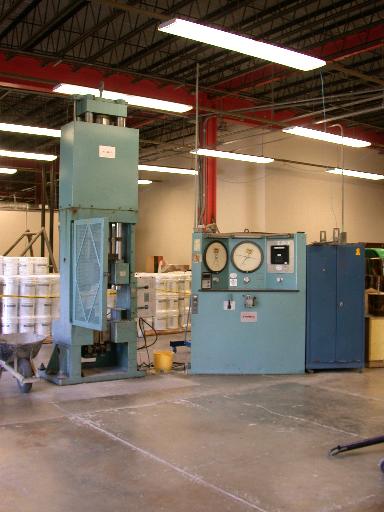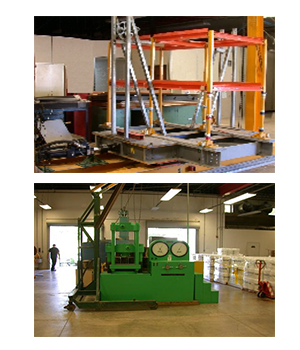The laboratory occupies a surface of 3,700 square feet that is divided into three areas: a support area of 700 square feet, an area for testing structures or small and medium components of 1,000 square feet and an area of 2,000 square feet where testing at a full scale will be developed. Besides machinery, the support area includes an MTS frame capable of applying up to 50 kips in compression or tension. This frame is configurable for testing both statistics and dynamic materials.
Some of the machinery present at the laboratory consists of:
- A Riehle machine with a capacity of 400 kips to test efforts in compression, flection, beam tension, columns, and slabs.
- Two compression machines; one with up to 2,000 pounds of boost and the other with up to 2,000 to 600,000 pounds of boost to do testing of compression, flection, beam tension, columns and concrete slabs, wood, and steel.
The area where small and medium components are tested contains a unidirectional seismic simulation platform. The shake table consists of a steel plate of 8’x 4.5’ supported by a welded framework of structural beams. The steel platform that carries the structural model is above four low friction linear sliding bearings. This earthquake simulation facility is capable of reproducing sinusoidal signals, white noise, randomized, and earthquake excitation. This part of the laboratory also hosts the compressed air cannon which is used in wind related projects.


